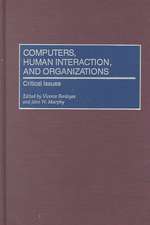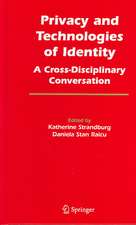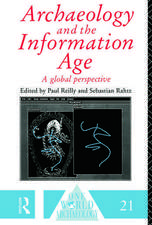Mediated Identities in the Futures of Place: Emerging Practices and Spatial Cultures: Springer Series in Adaptive Environments
Editat de Lakshmi Priya Rajendran, NezHapi Dellé Odeleyeen Limba Engleză Hardback – 3 ian 2020
Addressing a range of social and spatial scales and using a phenomenological frame of reference, the book draws on the works of Heidegger, Merleau-Ponty and Don Hide to bridge the seemingly disparate, yet related theoretical perspectives across a number of disciplines. Various perspectives are put forward from media, human geography, cultural studies, technologies, urban design and architecture etc. and looked at thematically from networked culture and digital interface (and other) perspectives.
The book probes the ways in which new digital media trends affect how and what we communicate, and how they drive and reshape our everyday practices. This mediatization of space, with fast evolving communication platforms and applications of digital representations, offers challenges to our notions of space, identity and culture and the book explores the diverse yet connected levels of technology and people interaction.
Preț: 652.54 lei
Preț vechi: 815.68 lei
-20% Nou
Puncte Express: 979
Preț estimativ în valută:
124.88€ • 135.60$ • 104.90£
124.88€ • 135.60$ • 104.90£
Carte tipărită la comandă
Livrare economică 22 aprilie-06 mai
Preluare comenzi: 021 569.72.76
Specificații
ISBN-13: 9783030062361
ISBN-10: 3030062368
Pagini: 329
Ilustrații: X, 300 p. 47 illus., 38 illus. in color.
Dimensiuni: 155 x 235 mm
Greutate: 0.61 kg
Ediția:1st ed. 2020
Editura: Springer International Publishing
Colecția Springer
Seria Springer Series in Adaptive Environments
Locul publicării:Cham, Switzerland
ISBN-10: 3030062368
Pagini: 329
Ilustrații: X, 300 p. 47 illus., 38 illus. in color.
Dimensiuni: 155 x 235 mm
Greutate: 0.61 kg
Ediția:1st ed. 2020
Editura: Springer International Publishing
Colecția Springer
Seria Springer Series in Adaptive Environments
Locul publicării:Cham, Switzerland
Cuprins
Being and Becoming: Emerging Relationalities with Space/Place and Socio-Technical Geographies.- Section A: Placing Media- Locative Interfaces.- Media Technologies: From Transcending Space to Socio-Formative Spheres.- Personalising the Urban: A Critical Account of Locative Identities and the Digital Inscription of Place.- Mise-En-Scene.- Identity through Expanded Architectural Awareness.- Section B: Spatial Representation- Social Interfaces.- The Role of Technology in Shaping Student Identity During Transitions to University.- How I Met My Neighbour: Planning for Spontaneous Playful Interactions through Public Screens.- Constructing Authenticity – Location Based Social Networking, Digital Place-making, and the Design of Centralised Urban Spaces.- Smart Citizenship - Subverting Data-based Urban Representations of the Public Domain(s).- Section C: Spatial Cultures- Technology-mediated Interfaces.-Marginalized Geographies and Spatialized Identities.- Noopolitical Resistances. Networks as Counter-Laboratories of Migration and Identity in Europe.- Luxury as Driver for New Urban Identities in Milan: Spatial Practices, Geographies and Open Questions.- More than Urban.- Section D: Conclusions – Mediated Identities in Place Futures.- Conceptualising Locational, Relational and Virtual Realities.- Mediated Identities in the Futures of Place: Towards a Conceptual Frame?
Textul de pe ultima copertă
This book examines the emerging problems and opportunities that are posed by media innovations, spatial typologies, and cultural trends in (re)shaping identities within the fast-changing milieus of the early 21st Century.
Addressing a range of social and spatial scales and using a phenomenological frame of reference, the book draws on the works of Heidegger, Merleau-Ponty and Don Hide to bridge the seemingly disparate, yet related theoretical perspectives across a number of disciplines. Various perspectives are put forward from media, human geography, cultural studies, technologies, urban design and architecture etc. and looked at thematically from networked culture and digital interface (and other) perspectives.
The book probes the ways in which new digital media trends affect how and what we communicate, and how they drive and reshape our everyday practices. This mediatization of space, with fast evolving communication platforms and applications of digital representations, offers challenges to our notions of space, identity and culture and the book explores the diverse yet connected levels of technology and people interaction.
Caracteristici
Brings together emerging trends in identity, culture and technology and their inter-relationships with spatial, built-environment practices for the first time Explores approaches within the social sciences, humanities and arts that offer new ways of understanding and studying socio-spatial and temporal practices in the futures of places Offers renewed perspectives on media, place and people interactions through its contributions from international authors who are young designers, artists, experts, early career researchers, practitioners and academics




























